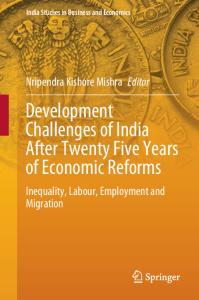Some reflections on the use of inappropriate comparators in CEA
- PDF / 874,516 Bytes
- 6 Pages / 595.276 x 790.866 pts Page_size
- 90 Downloads / 339 Views
ost Effectiveness and Resource Allocation Open Access
COMMENTARY
Some reflections on the use of inappropriate comparators in CEA José Antonio Sacristán1,2* , José‑María Abellán‑Perpiñán3, Tatiana Dilla2,4, Javier Soto4 and Juan Oliva5
Abstract Although the choice of the comparator is one of the aspects with a highest effect on the results of cost-effectiveness analyses, it is one of the less debated issues in international methodological guidelines. The inclusion of an inappropri‑ ate comparator may introduce biases on the outcomes and the recommendations of an economic analysis. Although the rules for cost-effectiveness analyses of sets of mutually exclusive alternatives have been widely described in the literature, in practice, they are hardly ever applied. In addition, there are many cases where the efficiency of the standard of care has never been assessed; or where the standard of care has demonstrated to be cost-effective with respect to a non-efficient option. In all these cases the comparator may lie outside the efficiency frontier, so the result of the CEA may be biased. Through some hypothetical examples, the paper shows how the complementary use of an independent reference may help to identify potential inappropriate comparators and inefficient use of resources. Keywords: Incremental cost-effectiveness ratio, Efficiency, Economic evaluation, Threshold, Social perspective, Comparator, Health technology assessment Introduction The aim of cost-effectiveness analysis (CEA) of health care programmes is to help policy makers to allocate scarce resources among available alternatives in order to maximize health outcomes [1]. Additional costs generated by one intervention over another are compared to the additional quality-adjusted life-years (QALYs) yielded, in the form of an incremental cost-effectiveness ratio (ICER). Decision rules have been developed to maximize the amount of QALYs provided by health care interventions restricted to a finite budget [2, 3]. According to the “fixed budget rule” [4] or “league table” approach [5], health care interventions are ranked in increasing order of ICER and then successively included in the health benefit basket or national health insurance scheme until the budget is exhausted. The ICER of *Correspondence: [email protected] 1 Department of Preventive Medicine and Public Health, School of Medicine, Universidad Autónoma de Madrid, Avenida Arzobispo Morcillo s/n. 28029, Madrid, Spain Full list of author information is available at the end of the article
the least cost-effective intervention that is adopted indicates the “critical ratio” [6] or cost-effectiveness threshold representing the opportunity cost of funding new programmes. On the contrary, according to the “fixed ratio rule” [4] or “threshold approach” [7], a new intervention is adopted if its ICER does not exceed a certain cost per QALY gained threshold of fixed price cut-off point. Both decision rules are coincidental if the budget implicitly determined by the “fixed ratio rule” is the same as the bu
Data Loading...











